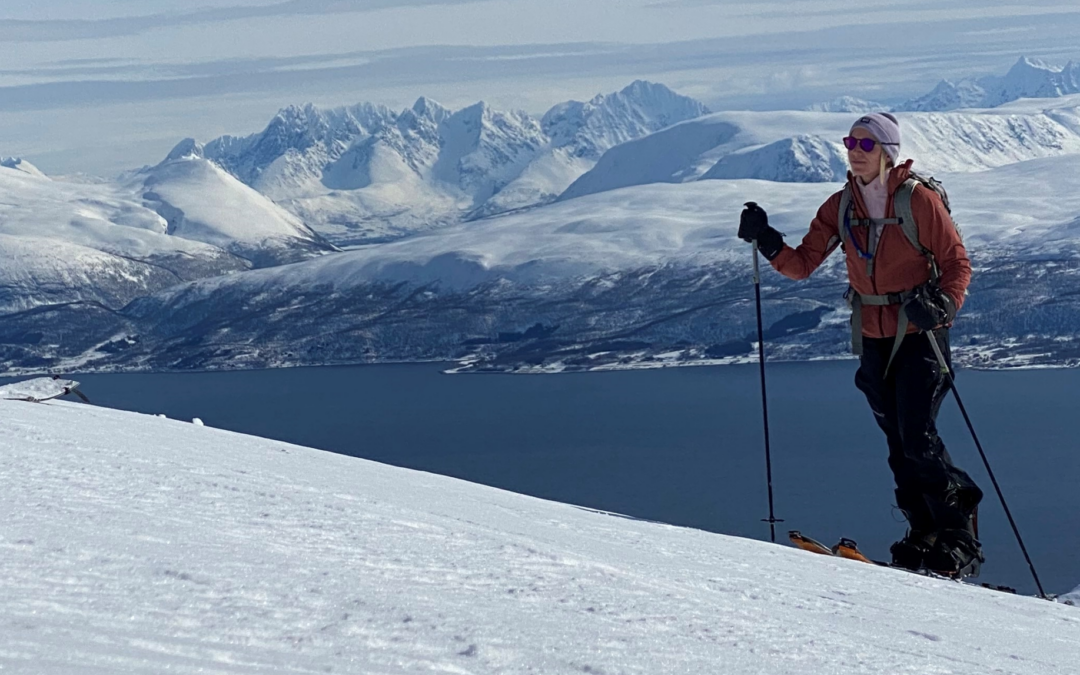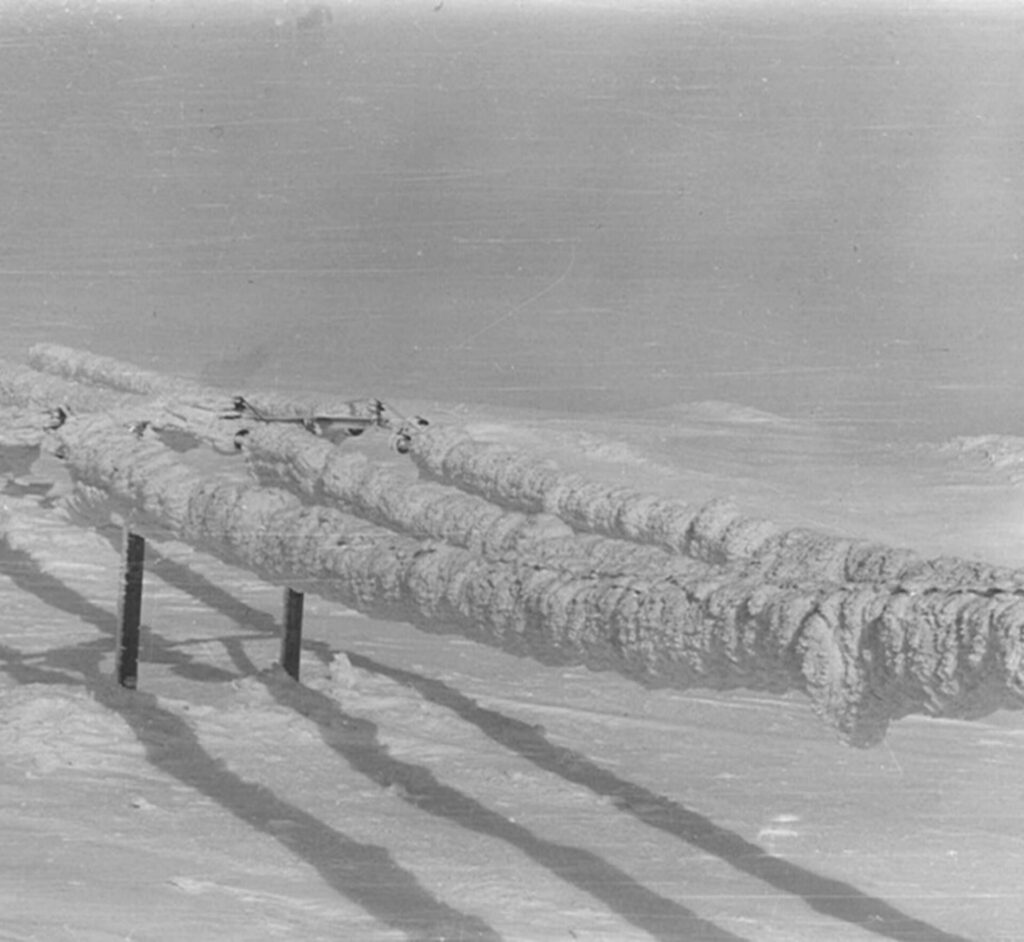Every year a “Power Woman” is crowned within the Power Woman network (“Kraftkvinnene” in Norwegian) – an initiative for women in the renewable power industry. The purpose is to create an arena to build networks with other women in the industry, and the award is created to honour women who contribute to innovation within the industry and who serve as role models to others. The award takes place on February 12 in Oslo.
Our Norwegian employee and meteorologist, Emilie C. Iversen, has been working as an advisor in the power sector for nearly 10 years. Impressively, her education is nearly as long as her work experience in the field, culminating in a PhD degree in meteorology in 2022. In addition to the role as advisor, she has been part of several large research and development (RnD) projects, contributing to bring the industry forward.
Solid Background
She started her career as a scientist at UiO within an RnD project that involved the development of a model for wind simulation in wind parks. She then joined Kjeller Vindteknikk in 2015, implying that next year will be her 10-year anniversary! She has worked a lot on climatic load, and especially ice load assessments for power lines, and in 2019 the opportunity to take a PhD opened up through an RnD project in collaboration with Statnett (“Icebox” [1]). The project’s goal was to predict, prevent, and effectively remove ice loads on power lines. Ice loads are caused by either supercooled cloud droplets, wet snow, or freezing rain, and can put a very large strain on the power lines. The picture to the right is the measured world record in rime ice load (305 kg/m!) from Voss (Photo: Olav Wist, 1961). Emilie’s part of the project was to improve a weather forecasting model used to predict icing, as well as to study future changes in ice loads and other variables relevant for icing, especially precipitation.
Unique Work Environment
Emilie describes the work environment at KVT as unique.
– The reason I have stayed so long at KVT is not only because of the exciting tasks and the great opportunities for professional development through research, but also because of our informal, social and inclusive work environment with incredibly nice and skilled colleagues! We have a very strong team spirit in KVT, which makes us a very close-knit group. Our team spirit comes in part from being an internationally recognized name in the industry, with world class specialist competence.
Increasing Proportion of Women
– I was initially one of very few women at KVT. But I’ve never had to think too hard about it, I’ve always had such nice colleagues who never made me feel like a minority. Today we have a solid proportion of women and the number is increasing, which I see as very positive for both the work environment, interaction, and the industry as a whole. The establishment of the Power Woman Network and the arrangement of the award is a fantastic initiative, and I believe it will contribute to bring more women into the industry!
Today’s Work Role
Today, Emilie is a so-called field specialist and works a lot with assessments of climate change’s impacts on climatic loads and renewable power production. Emilie is also the leader of a research project that focuses on the risk of ice throw and ice fall from wind turbines (“SVIV” [2]), where a forecasting tool is developed which can be used for planning of operation and maintenance work in wind parks in the safest possible way.
Climate Change and Climate Adaptation
In addition to the obvious change in temperature, climate change brings more intense extreme weather. This results in an increased risk of floods, landslides, and droughts, which in turn leads to an increased risk of damage and loss of value for society. In light of relatively recent extreme weather events, it is clear that society is not sufficiently equipped to withstand a future where such weather can occur more frequently.
– Climate scientists have been warning about this for many years, and it is nice to see that concrete measures are forming to provoke climate adaptation of society (for example, through the EU’s green taxonomy). All infrastructure, buildings, and other constructions that are to be built or upgraded should perform an assessment of projected physical climate change impacts, and implement climate adaptation measures accordingly. We notice that this is still a new way of thinking in many industries, and that there aren’t always sufficient incentives to carry out such assessments. Here I want to contribute by communicating to our customers that it is important, and cost-efficient (!), to be proactive rather than reactive, as the latter can result in significant losses that could have been avoided.
Norconsult has developed a competent team to make assessments of physical climate changes, the associated risk it poses for the relevant projects, and appropriate climate adaptation measures.
– We use both publicly available information, as well as generate our own unique climate data, to evaluate local future climate changes. We use this, together with the other professional environments in the rest of Norconsult, for example, to assess future climatic loads on our power grid, future changes in energy production from hydro and wind power, climate adaptation of new buildings, to name a few.
Synergies between Work and Leisure
Emilie also thinks about weather and climate change in her spare time.
– I love to jump on my snowboard a day it’s dumping down with powder. Going ski touring with my splitboard is also high on the list. Unfortunately, climate change threatens these interests, with a shrinking ski season and a decline in the number of days with really good powder in Norwegian ski resorts. When incoming low-pressure systems from the west, with large amounts of precipitation, hits Norway in today’s winter climate, the temperature more often shifts to positive, and the precipitation from dry snow to sleet or rain. We must continue to work hard to limit climate change, for both the sake of the ski season and our precious planet, and renewable energy is a big part of the solution!



